Getting to review automotive legends is an absolute joy as an enthusiast, but it’s also a heavy burden as a writer. How do you put a fresh spin on an icon? How do you cover a car larger than life in a way that does it justice? How the hell do I add something meaningful to the tapestry of stories told and reviews written about the Changli Freeman when Jason Torchinsky is the owner?
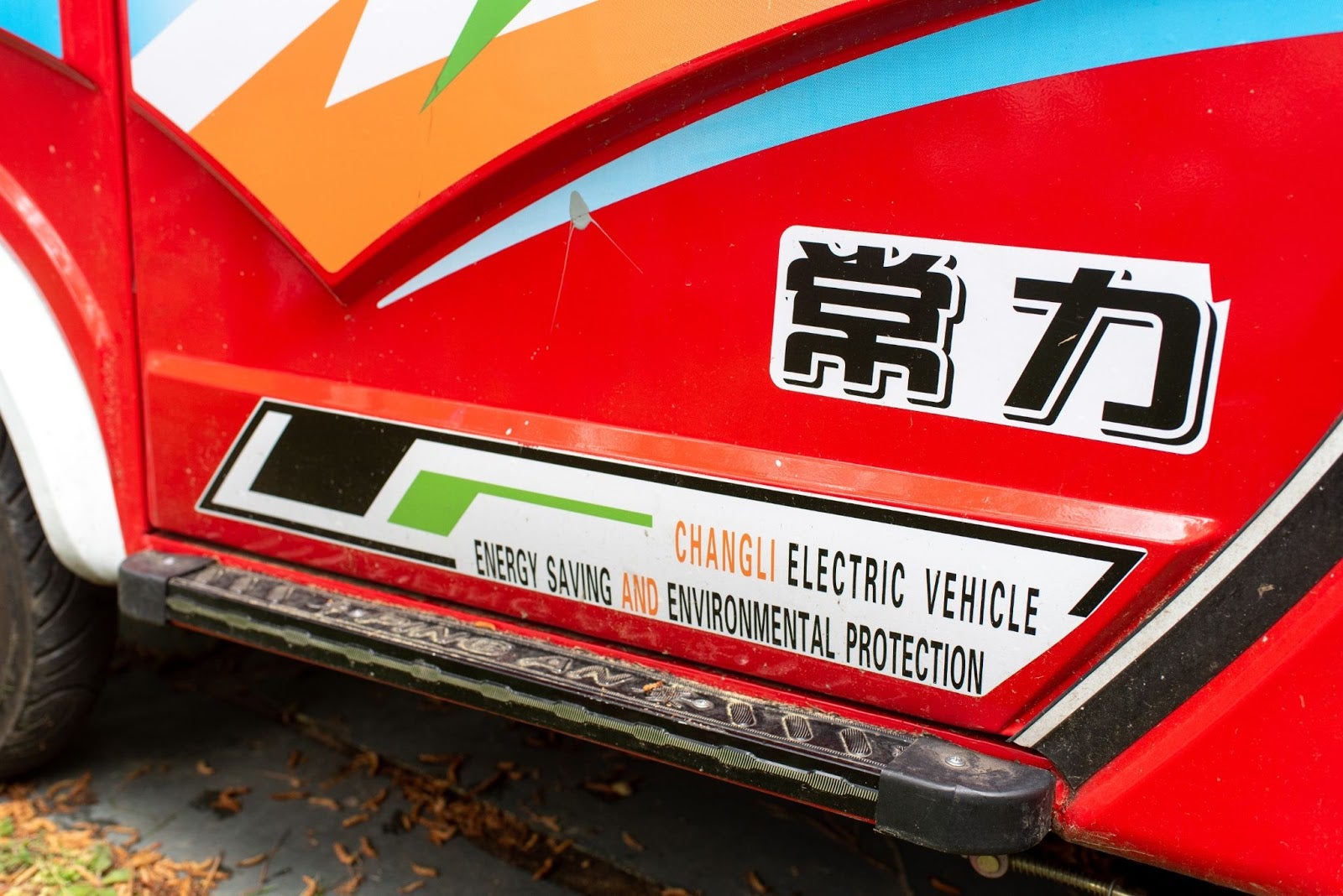
It needs no introduction, but I’ll give it one anyway: This is Jason Torchinsky’s Changli Freeman, the world’s cheapest electric car. To longtime readers of this site (including me), this car is as iconic as any homologation special or Le Mans prototype imaginable, but if you’re not familiar, it is a $US1,200 ($1,539) Alibaba-purchased “mobility scooter” primarily marketed to older Chinese people in rural areas who cannot drive but need a means of transport. It boasts a radio that can play MP3s, a 1.1 HP rear wheel drive electric motor, 45 km of range, and 37 km-per-hour top speed, as Jason found in extensive testing. It also looks completely insane, is a zero-emissions vehicle, and Jason is very excited about it, which is all I need to get completely hyped.
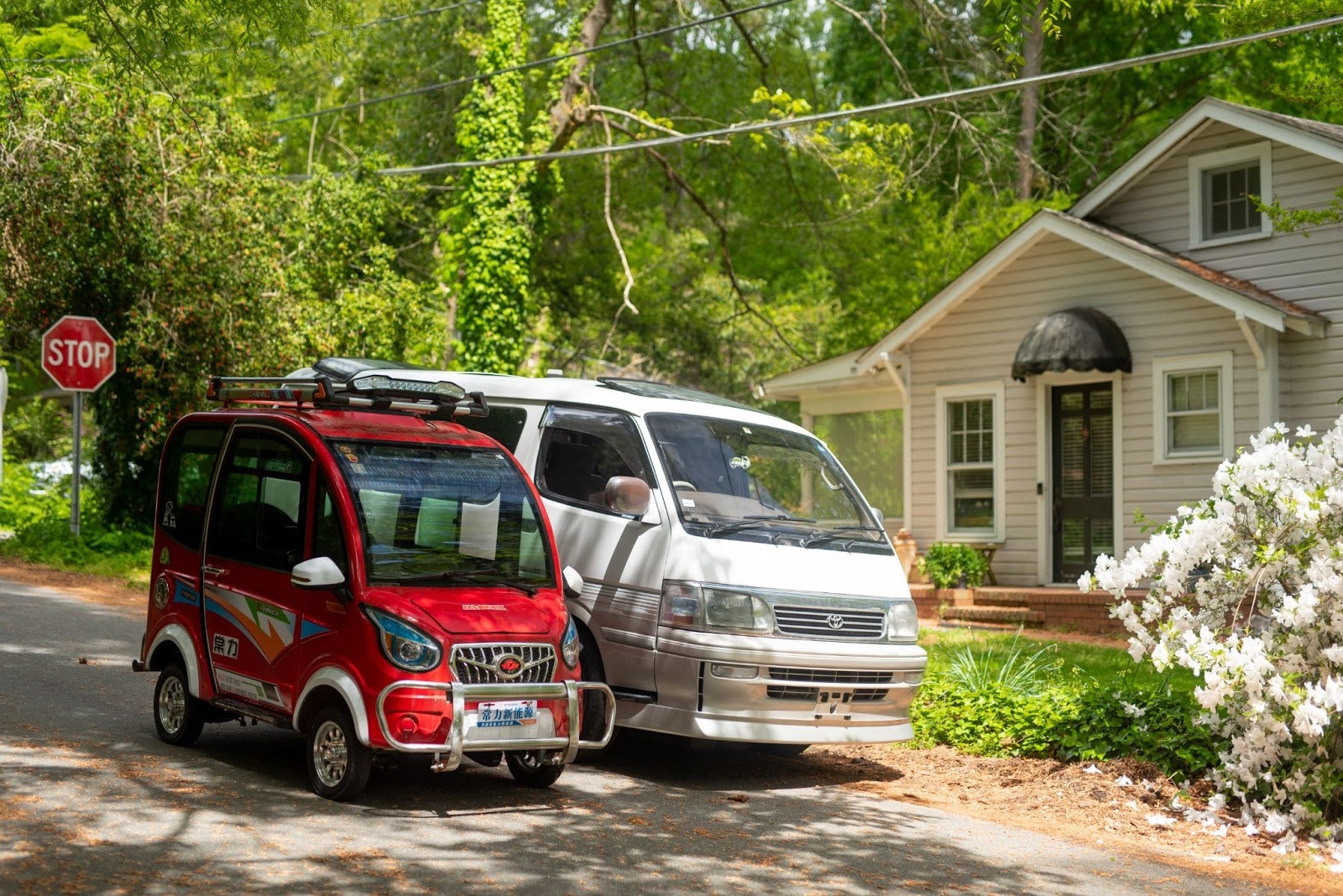
As I’ve been road tripping around the U.S. in my new-to-me 1995 Toyota Hiace 3.0 Turbo Diesel Super Custom, my travels took me to Jason’s neck of the woods, and he offered to let me come through and check out his collection. I leapt at the chance. I’m generally enthusiastic about electric cars, and I’m very enthusiastic about vehicular antics, and Jason’s Chinese EV managed to combine both of these in one adorable package.
Driving a Legend
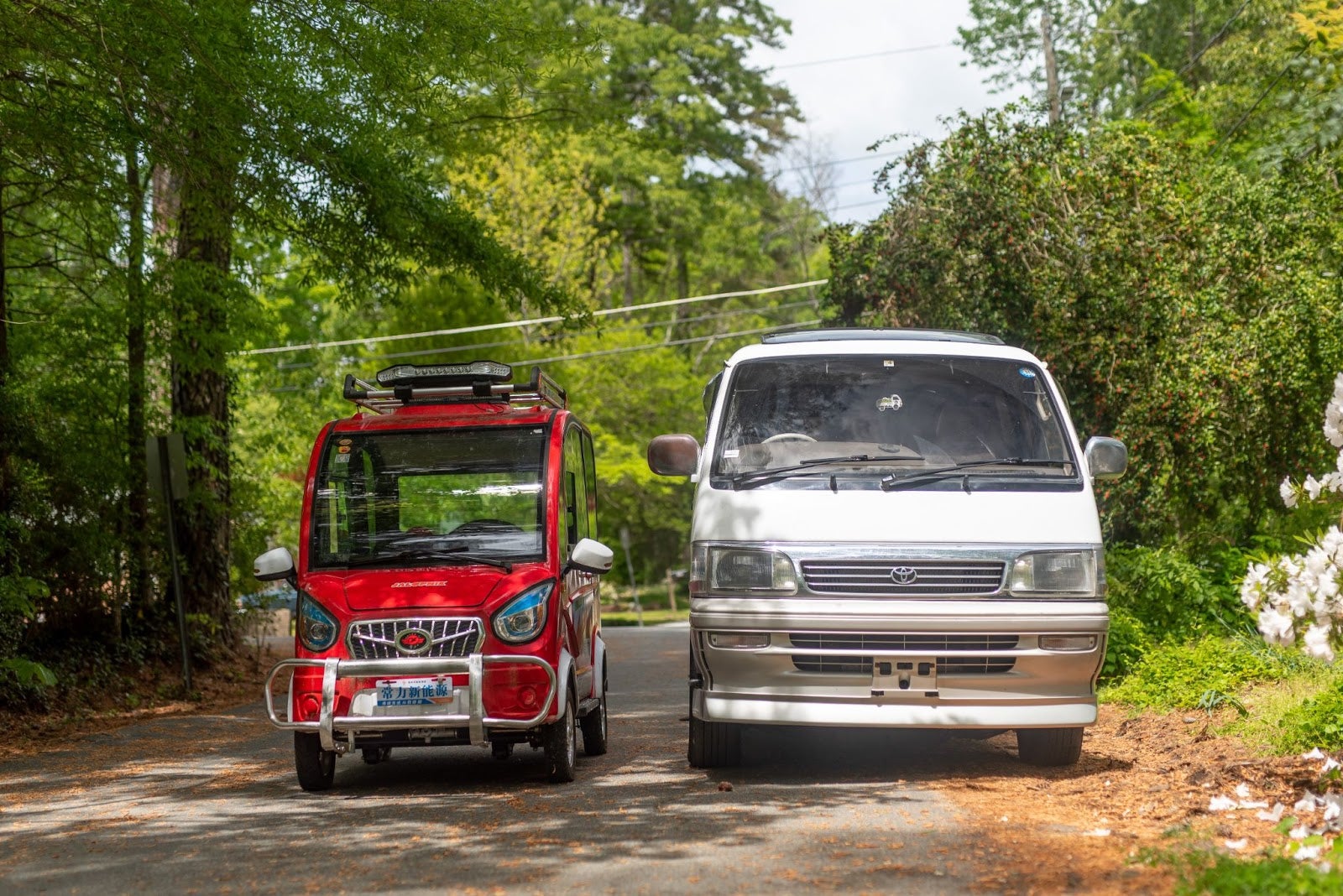
Rolling up to Jason’s house was the easiest stop to find on my entire journey, because the little EV sits parked out front on his footpath, and it’s not exactly a beige Camry. Immediately, it stands out from everything in America. It looks like a car hit with a shrink ray, rather than a golf cart. There are no intakes to speak of, so there’s no need for the adorably angry grille, and the headlights aren’t manufactured to any DOT spec, so they could just be sealed beams or generic LEDs. Instead, the designers at Changli went out of their way to give it a car-like, macho face, just because they felt like it. This theme is carried throughout the design language of the Freeman. The taillights are similarly automotive-inspired, the steering wheel looks like a ½ scale version of a 2013 Ford Escape’s (airbag bulge and all!), and the pizza-cutter wheels look like little alloys. Changli fully committed to the bit with this thing, which is even more confusing once you step into it.
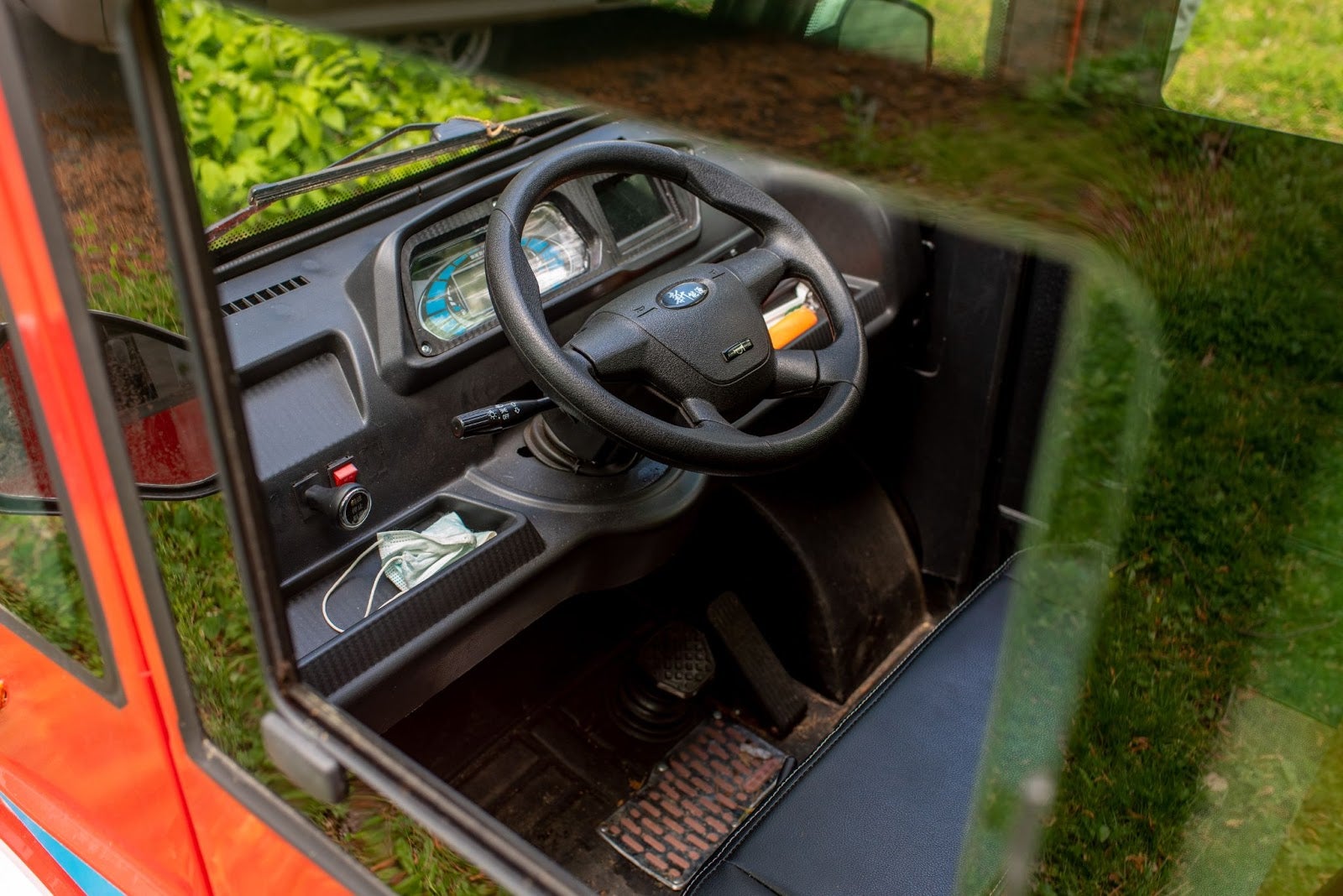
The adorable Changli isn’t currently plated, and is permanently excluded from highway use. (It has a 37 km/h top speed, after all — you couldn’t pay me enough to try to merge into so much as a school zone with this.) It’s much more of a golf cart than a car in usage, despite the adorably mid-2010s crossover aesthetic it’s appropriated. Stomping the accelerator on even the mildest grade leads to a bit more of a dying Power-Wheels Jeep experience than the neck-breaking torque of a typical American EVs. The vehicular appearance gives off the impression you’re sitting down in a little tiny Tesla, or hell, at least a mini-Leaf. Instead, it’s more like a Club Car.
That isn’t to knock it. The steering is reasonably connected to the road, and the suspension makes a much better effort to cushion the driver than most golf carts I’ve ever driven. It’s probably not going to set any ‘Ring lap records or compete with the feel and poise of a 911, but also I’d argue it felt less sketchy than my old ‘92 Mitsubishi Mirage did. The generous trunk space makes carrying groceries imaginable, and the extremely silly profile with its fivehead-sized windshield yields copious headroom and great visibility, even for my lanky 6’2” frame.

Generally, I was driving a golf cart. Get going downhill, though, and rapidly I felt like a Group B driver on the knifes’ edge of control, piloting a visceral deathtrap past mailboxes and garbage cans; this experience only intensifies when I stabbed the brakes for confidence and found that the twin rear cable-driven drums only further instill doubt. At this point I was maybe going 29 km/h, but I still felt like Michèle Mouton as I careened down the little gravel road, white-knuckling the plasticky steering wheel for dear life. Slow-car-fast is true all the way down to the very nadir of the spectrum, it turns out, and I had more fun in this thing than I thought was actually legal.
We’re getting to the real kicker here. It’s better than a golf cart in a vacuum. It keeps you dry, it holds things other than golf bags, and it’s way cooler looking than a golf cart. But outside of a vacuum? The Changli destroys any American personal transporter. It costs one eighth as much as a base model golf cart.

Yes, this Club Car costs nearly 10,000 dollars, and it has no doors. In a former life, I was dragged to a work outing at a golf course, and I drove the cart, because everything with four wheels calls to me like a siren off of Anthemoessa. I can say with certainty: Golf carts are not good personal transport. They are good at carrying golf clubs. For any other kind of trip that you’d take outside of a golf course — a wet-weather trip to a friend down the street, a run to the corner store for essentials — the Changli shines. It protects you from the weather, it is reasonably comfortable, and it feels vastly less dorky to drive around town. Jason’s Changli is genuinely a slam dunk of a vehicle here, case open and shut.
Comparing the Changli
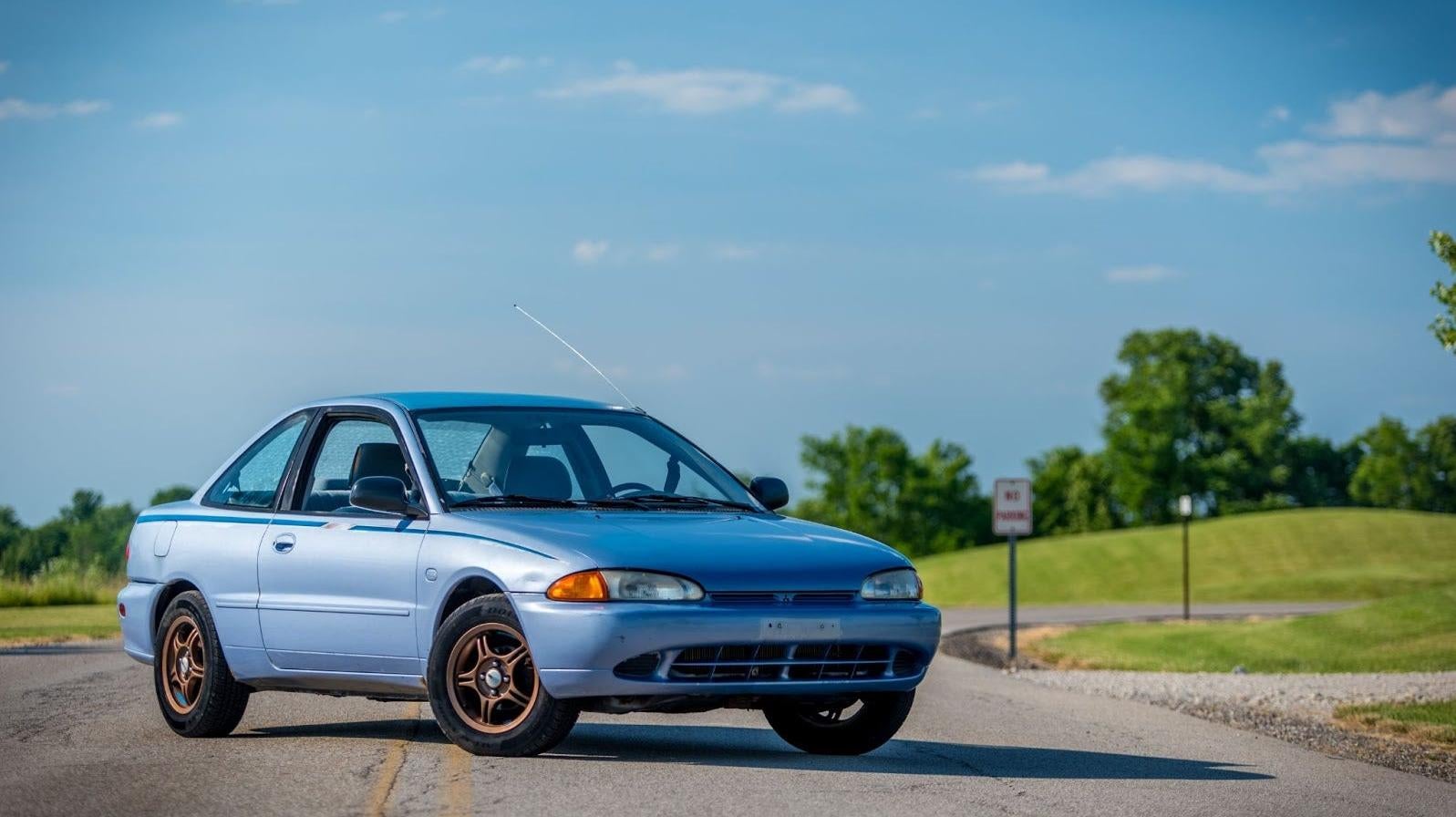
But let’s take it a step further. My aforementioned Mirage was about the same price as the Changli. Even nowadays, $US1,200 ($1,539) doesn’t really get much better of a used car anyway, so it’s a fair comparison. The Mirage obviously was vastly more capable of highway trips, of course. It had an actual engine and DOT approval, so score one for the Japanese econobox. Both the Changli and the Mirage are deathtraps, so they’re on even footing there. The main difference is only that the Changli can’t quite get going fast enough to kill you. The Mirage can.
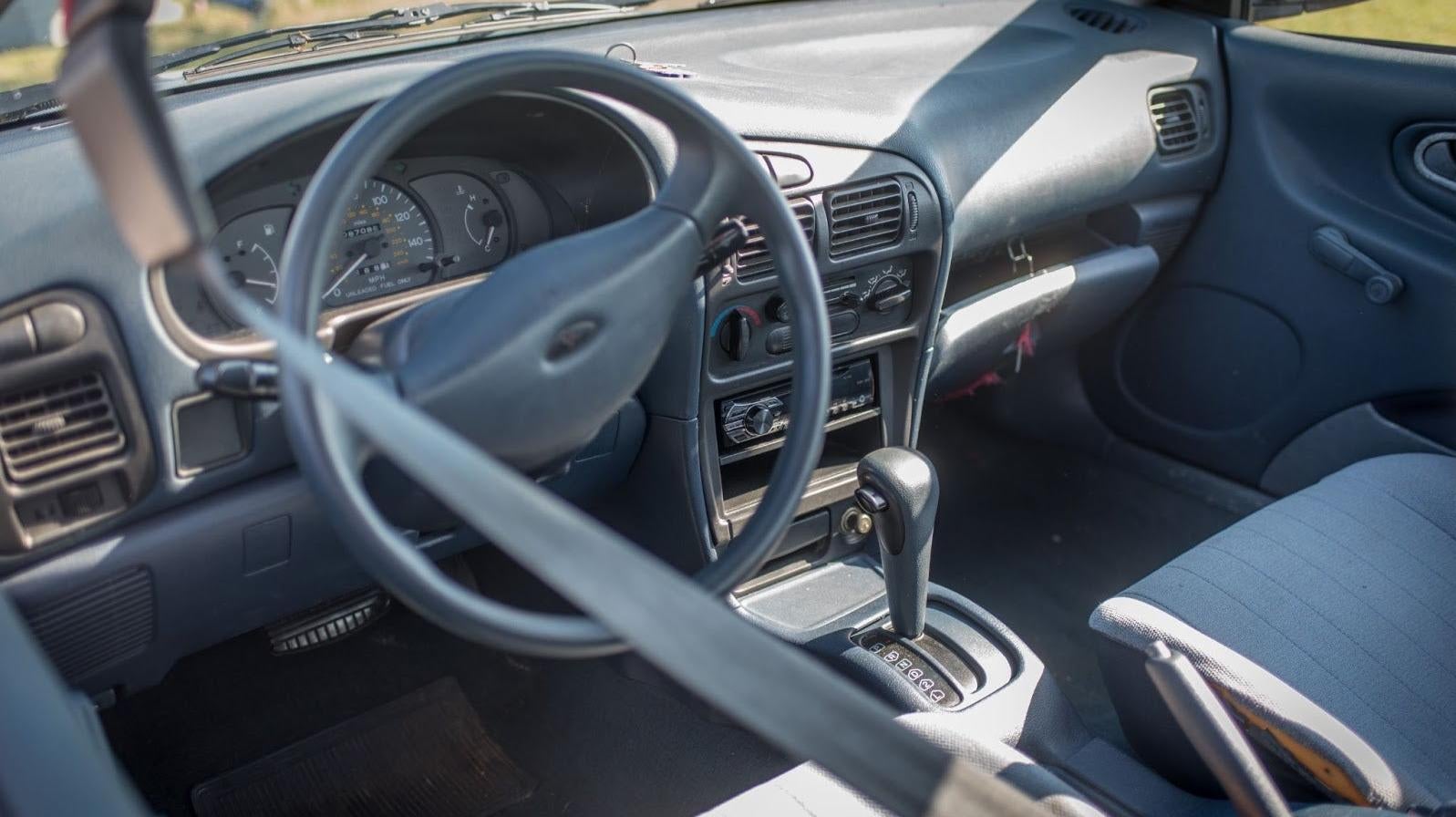
The Mirage had more cargo capacity and seated four vs. the Changli’s McLaren F1-like three seats, but on the rare occasion I’d load down the Mitsubishi with four people, I could no longer accelerate up hills. It would slowly and heroically climb to about 32 km/h, and then the three-speed transmission would simply refuse to shift up, because the loss of torque would be too much for it to handle and we’d lose our momentum. The Changli we did put three people in, and while it slowly chugged uphill, it did make it. While the Mitsubishi wins on a spec sheet, real-world experience tells me they’re closer than the stats suggest.
In the creature comfort departments, the Mitsubishi, like the Changli, did not have working climate control, but the stereo in my Mirage was also broken. That’s a decisive win for the MP3-blasting unit installed from the factory in the Changli. The fit and finish on both vehicles was objectively closer than you’d think, and 25 years of commuter-car use had not done the Mitsubishi any favours, as the bungee-cabled glovebox and torn seat bolsters help so vividly to demonstrate. It would be pointless to compare a new Mirage to the Changli, though. The price differential would be like comparing an FR-S to a 911 GT3 RS. Therefore, the Mirage must be considered after time has ravaged its flimsy plastics, and so I’d rather have the new-cart-smell of the Changli, where the interior hadn’t had a solid 20 years to age and become tacky and splintered.

Finally, let’s give them a real-world use case where we could actually compare them fairly. The main reason I owned the Mirage was to get around a college campus where the buses ran infrequently and the classrooms were dotted throughout the hills of the landscape. (This was Kent State University, back in Ohio.) The speed limit stayed below 30 everywhere I’d travel, so the 37 km/h top speed of the Changli would be no issue. Parking was an enormous problem there, and the scooter-sized footprint of the Chinese runabout would have solved that for me.
Jason lives in a college town with a similar landscape to Kent State, so it was rather easy to compare the two. College towns are unique in America, because for some reason our general mentality has been that for four years of your youth, you get to enjoy a somewhat affordable, walkable, dense city with a vibrant social life and unique culture. After that, you need to live 48 km from work in a wooden box on one-fifth of an acre of manicured grass, density be damned. College life, therefore, is where the Changli has the best chance to shine, because it works genuinely well as a small-town runabout.
The Changli actually would have been preferable to my old Mirage. A $US1,200 ($1,539) car is never going to be cheap to run, even on duct tape costs alone, and my Mitsubishi sure wasn’t. First the cat failed, and it wouldn’t pass inspection. Rust crept through the brake lines, and finally, the transmission pan rotted away, killing it. Meanwhile, Jason hasn’t put an extra dime into the Changli since he got it, and why should he? It’s a new car. It performs 90 per cent of the duties of a bargain-basement used car, without actually having any problems, because it’s a brand-spanking-new EV. It actually made vastly more sense as personal transport for small-town life than I ever expected.
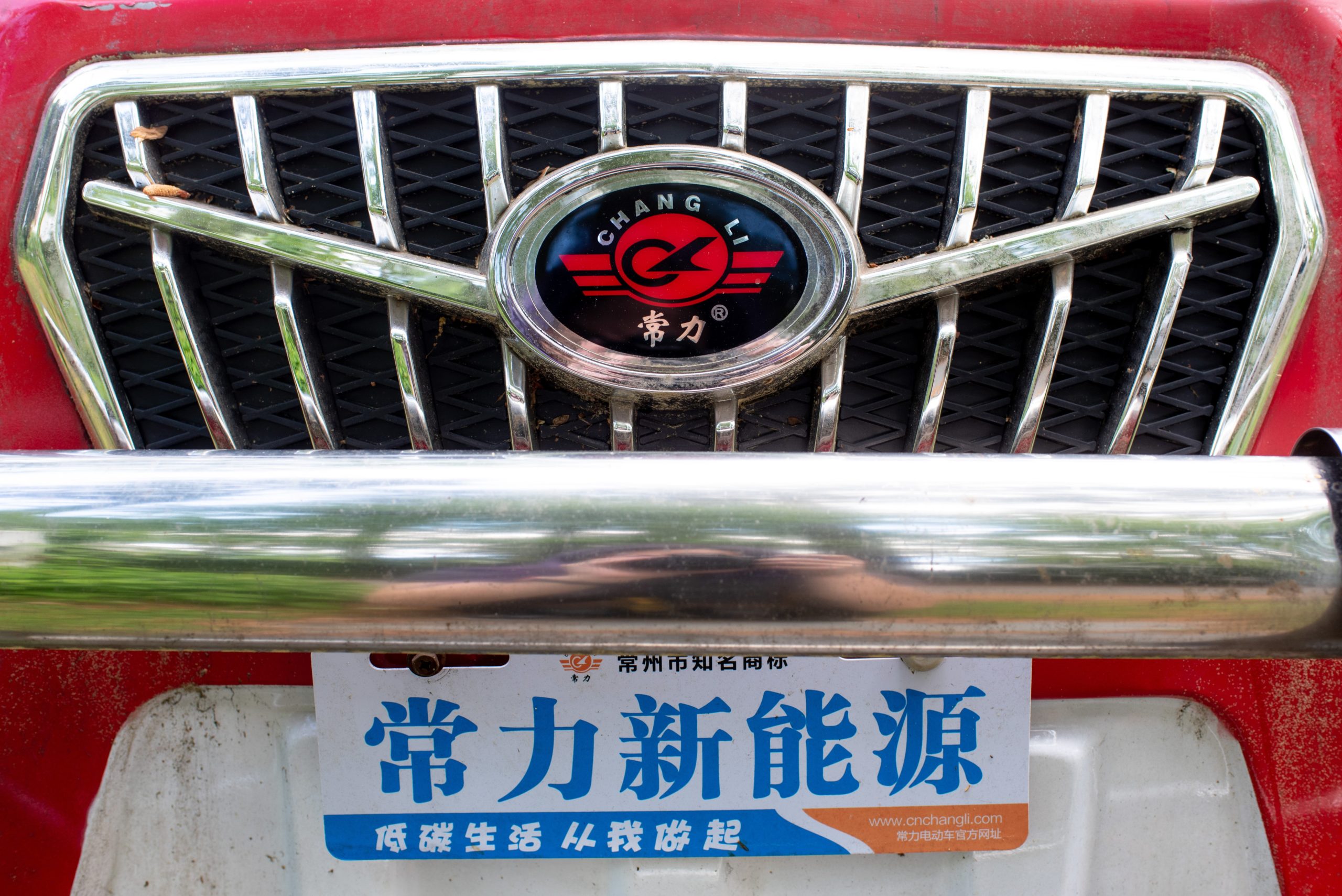
Jason is beloved by me (and all human beings) for his vehicular antics. He daily drives a Pao, for Christ’s sake. The Changli fits into that fun, playful nature so well, with its chibi-car appearance and oddball status, that it’s easy to forget it’s genuinely great. We have all been so blinded by Jason’s charm and weird-car-godhood that we forgot he bought something that made complete sense for his life and then wrote about it. That’s what I’m here to vouch for. The Changli is better than a golf cart, hands down. It’s better than a similarly priced car, for his current lifestyle or my old one as a college kid. Just because a car is weird doesn’t mean it’s not necessarily great, too, and the Changli is rolling proof of that.
